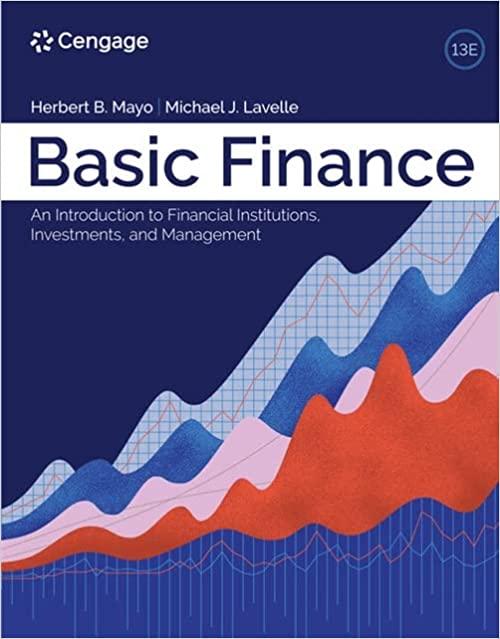Answered step by step
Verified Expert Solution
Question
1 Approved Answer
1. Consider the one period model with s = 100, u = 1.2, d = 0.8 and R = 0.1. Find the value of the

1. Consider the one period model with s = 100, u = 1.2, d = 0.8 and R = 0.1. Find the value of the put option with the contract (x) = (100 - x)+, and find its hedging portfolio. 2. Consider the two-period model (T = 2) with s = 100, u = 1.2, d = 0.8 and R = 0.1. Find the value of the put option with the contract $(x) = (100 - x)., and find its hedging portfolio. In class, we only considered contingent claim that is a function of the stock price at the time horizon, i.e., X = (S). However, the same idea can be applied to evaluate contingent claims which are not of that form. Look at the following two problems. 3. Suppose that So = 4, u = 2, d = and the interest rate R Let 53 = (50 + S+ S2+S) be the average of stock prices from today to the time horizon. Consider the Asian option X = (54 - 4).. Find the hedging portfolio, and the price of the contingent claim. 4. Suppose that so = 4, u = 2, d = 1 and the interest rate R = Consider a lookback option that pays off x = max(S- S3). This option means that at the last time, looking back the stock prices at previous times, the owner can take the highest difference. Find the hedging portfolio, and the price of the contingent claim. 1. Consider the one period model with s = 100, u = 1.2, d = 0.8 and R = 0.1. Find the value of the put option with the contract (x) = (100 - x)+, and find its hedging portfolio. 2. Consider the two-period model (T = 2) with s = 100, u = 1.2, d = 0.8 and R = 0.1. Find the value of the put option with the contract $(x) = (100 - x)., and find its hedging portfolio. In class, we only considered contingent claim that is a function of the stock price at the time horizon, i.e., X = (S). However, the same idea can be applied to evaluate contingent claims which are not of that form. Look at the following two problems. 3. Suppose that So = 4, u = 2, d = and the interest rate R Let 53 = (50 + S+ S2+S) be the average of stock prices from today to the time horizon. Consider the Asian option X = (54 - 4).. Find the hedging portfolio, and the price of the contingent claim. 4. Suppose that so = 4, u = 2, d = 1 and the interest rate R = Consider a lookback option that pays off x = max(S- S3). This option means that at the last time, looking back the stock prices at previous times, the owner can take the highest difference. Find the hedging portfolio, and the price of the contingent claim
Step by Step Solution
There are 3 Steps involved in it
Step: 1

Get Instant Access to Expert-Tailored Solutions
See step-by-step solutions with expert insights and AI powered tools for academic success
Step: 2

Step: 3

Ace Your Homework with AI
Get the answers you need in no time with our AI-driven, step-by-step assistance
Get Started


